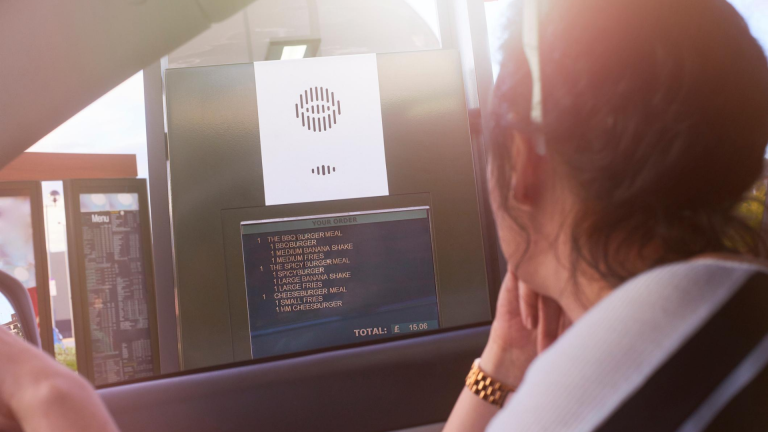Drive-thru wait times can be significantly shortened when voice-enabled menu boards are in use, giving QSRs the option of expanding from one drive-thru lane to multiple lanes of traffic or multiple drive-in stalls capable of receiving orders simultaneously.
In the hotel environment, voice-enabled kiosks offer guests access to always-available concierge services, the ability to request room updates or extended stays, restaurant locations, and make reservations—all with a simple voice request. Offering speed and convenience can encourage guests to make value-added requests without the frustration of waiting in long lines.
5. Voice-enabled kiosks improve employee efficiency
When you lessen the burden of order taking from staff, you free them up to focus on customer service and other critical tasks. Without needing to talk through orders, modifications, and special requests, employees can take the time to care for walk-up customers who want to talk with a person, carefully assemble orders, and cheerfully deliver food or process payments.
Hotel guests will still have the luxury of talking with an employee to ask other types of questions, get recommendations, and discover other hotel amenities. They will be delighted at the simple check-in procedures that don’t require computer or screen literacy or visual prompts to guide them through an endless list of options. They will appreciate the ability to get immediate assistance from front desk staff who aren’t always occupied with lengthy check-in and check-out procedures.
Implementing a voice-enabled kiosk or menu board developed with advanced natural language understanding technology allows your guests to make their requests naturally and conversationally—just as they would with another human.
Serve up better guest experiences, increase convenience and accessibility, and improve customer relations with a voice-first strategy that includes voice-enabled kiosks. Your guests will appreciate interacting with a voice assistant that is never rushed for time and can calmly accept any order and deliver nutritional information or recommendations that the cashier or front desk employee may not have readily available.
Our Houndify independent voice AI platform can help any hotelier or restaurant brand integrate a voice solution into their products, kiosks, and apps. We can combine all the benefits of a voice-enabled ordering system with a variety of choices for cloud connectivity and the ability to maintain control over your customer experience and data.
Explore Houndify’s independent voice AI platform at Houndify.com to register for a free account. Want to learn more? Talk to us about how we can help you bring your voice strategy to life.
Karen Scates is a storyteller with a passion for helping others through content. Argentine tango, good books and great wine round out Karen’s interests.









